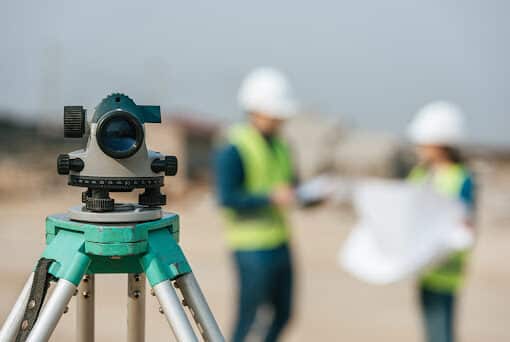When commercial real estate attorneys, title professionals, and brokers think of due diligence, they think of potential deal-breakers. Extensive time and money is typically spent curating and negotiating the Purchase and Sale Agreement (PSA) for the acquisition or disposition of properties. Once an agreement is reached, the due diligence clock starts ticking. That process can be risky, as any challenging items can send the transaction into a spiral. One of the fundamental items on the due diligence checklist is to conduct Environmental Due Diligence.
Environmental Due Diligence Basics
Typically, a lender or fund manager will require an environmental report as a condition for a commercial loan. They want assurances that the collateral for the loan minimizes any environmental risks and liabilities. To establish a basis for environmental reporting, the American Society of Testing and Materials (ASTM) set forth a national set of guidelines for gathering and reporting any environmental issues for commercial properties. The initial phase of reporting is an Environmental Site Assessment that offers a set of unique guidelines for reporting any uncovered Recognized Environmental Conditions (REC).
Phase I Assessments And Beyond
Phase I involves a non-invasive site visit, usually completed by a credentialed Environmental Assessor. The assessor will look for the likely presence of any hazardous substances or petroleum products. They will also observe and document any indication of an existing or past release or any potential future release of a hazardous substance. The assessor is also required to research and review the regulatory and historical records and conduct interviews with people associated or familiar with the property. These interviews may result in useful information regarding the site that may not have been available in any public or historical record.
Phase I can also include a more in-depth scope of work, including sampling for asbestos, lead based paint, lead in the drinking water, radon tests, and more. The initial Phase I Assessment will offer either recommend further investigation or determine that there is no need for additional action. If RECs are uncovered, the recommendation for Phase II would likely be imminent.
Phase II is a subsurface investigation involving advancing borings and collecting samples of the soil and groundwater using heavy equipment. Samples are sent to outside independent laboratories for analysis of contamination. The results of Phase II assessment reveal the presence of contamination and can determine the necessity for costly remediation.
Digging Deeper Into CERCLA
Now that we have defined the basics, it is important to understand the available landowner protections. Superfund, or the Comprehensive Environmental Response, Compensation & Liability Act (CERCLA), defines who would be responsible for any liability and cleanup costs of sites contaminated with hazardous substances. CERCLA was enacted by Congress on December 11, 1980, and it created a tax on the chemical and petroleum industries that provided federal authority to respond to any releases or potential releases of hazardous substances that may endanger public health or the environment. An initial trust fund of $1.6bn was set up to cover the clean up of any abandoned or uncontrolled sites.
According to the US Environmental Protection Agency (EPA), CERCLA:
- Established prohibitions and requirements concerning closed and abandoned hazardous waste sites
- Provided for liability of persons responsible for releases of hazardous waste at these sites
- Established a trust fund to provide for cleanup when no responsible party could be identified
What If You Were The Landowner?
Let’s say that you purchased an industrial warehouse back in the late 1960s before any environmental standards had been created. In 2019, you decide to sell the property to Jane Doe. Ms. Doe is a smart prospective buyer and has contracted with a vendor to perform a Phase I Environmental Assessment prior to purchasing. While conducting the assessment, the Environmental Assessor found RECs on the property. The previous owner of the warehouse manufactured harsh chemical solvents for years. An underground storage tank (UST) was discovered and identified underneath the property with no proper government closure, and is considered an REC requiring further investigation.
During the Phase II ESA, soil and groundwater samples were taken. The presence of harsh chemical solvents was identified and noted to be contaminating your property. This was likely from the prior underground storage tank leaking into the subsurface. In most cases, you would be protected under CERCLA as an innocent landowner, as you were unaware of the site’s previous history and purchased it before any regulatory standards were put into law. As such, you would not be responsible for the cleanup of the site.
In most cases, the EPA would classify your property as a Superfund site and fund the cleanup through tax dollars. Ms. Doe would now have a full understanding of the issues surrounding the purchase and can walk away without harm. However, had Ms. Doe decided against conducting any environmental due diligence, she would be responsible for the cleanup costs, which can often be more than the cost of the property itself.
Commercial purchases can be very complex and require a lot of due diligence to ensure that the property is free of liability. However, if proper due diligence isn’t performed, the financial burden can be extremely damaging. Keeping your clients up to date on any environmental liabilities can help the transaction run smoothly and save time and money in the future.
About the Author
Miriah Ekus is the VP of Commercial National Accounts and Marketing Consultant for National Due Diligence Services (NDDS), a division of American Surveying & Mapping, Inc. (ASM). NDDS/ASM is one of the nation’s premier, commercial land surveying and due diligence firms. Miriah has a B.S in Environmental Science from Florida State University and a M.S in Global Sustainability form University of South Florida with experience writing Phase I Environmental Site Assessments.





